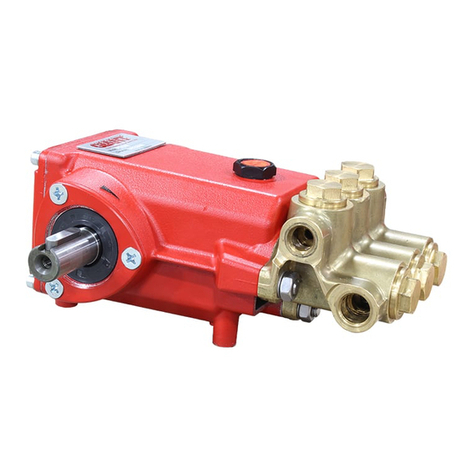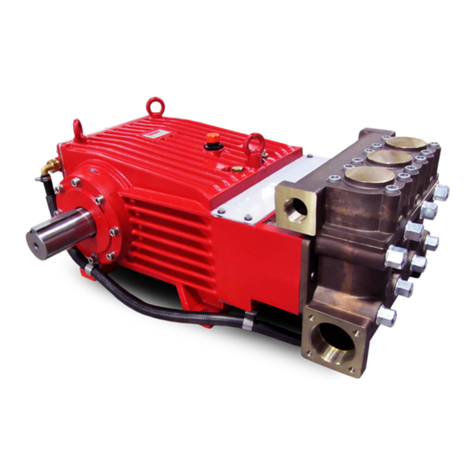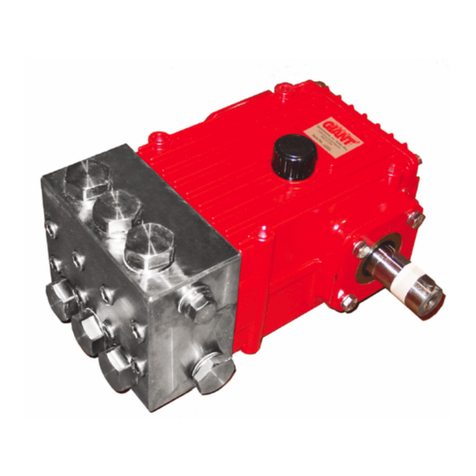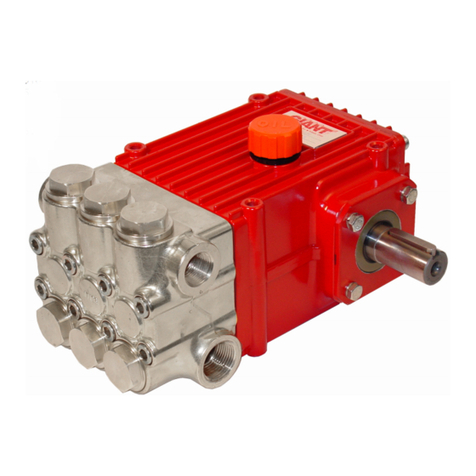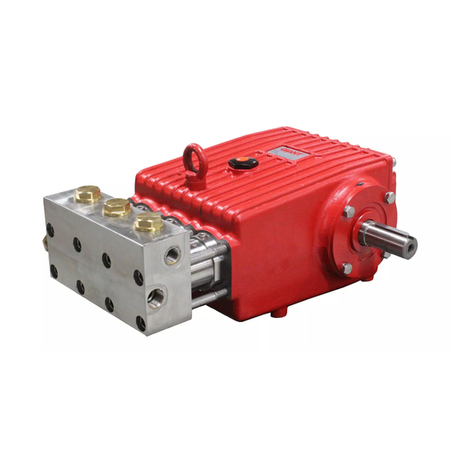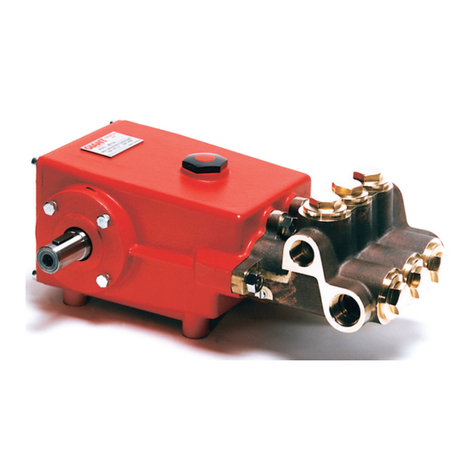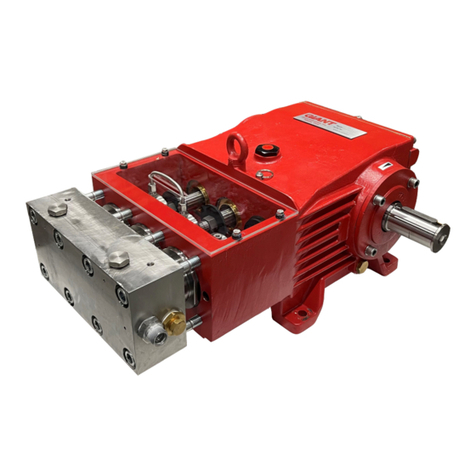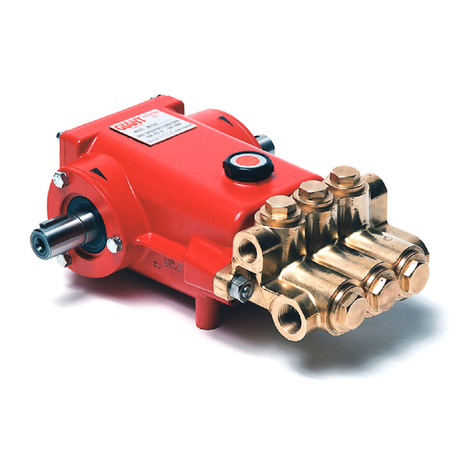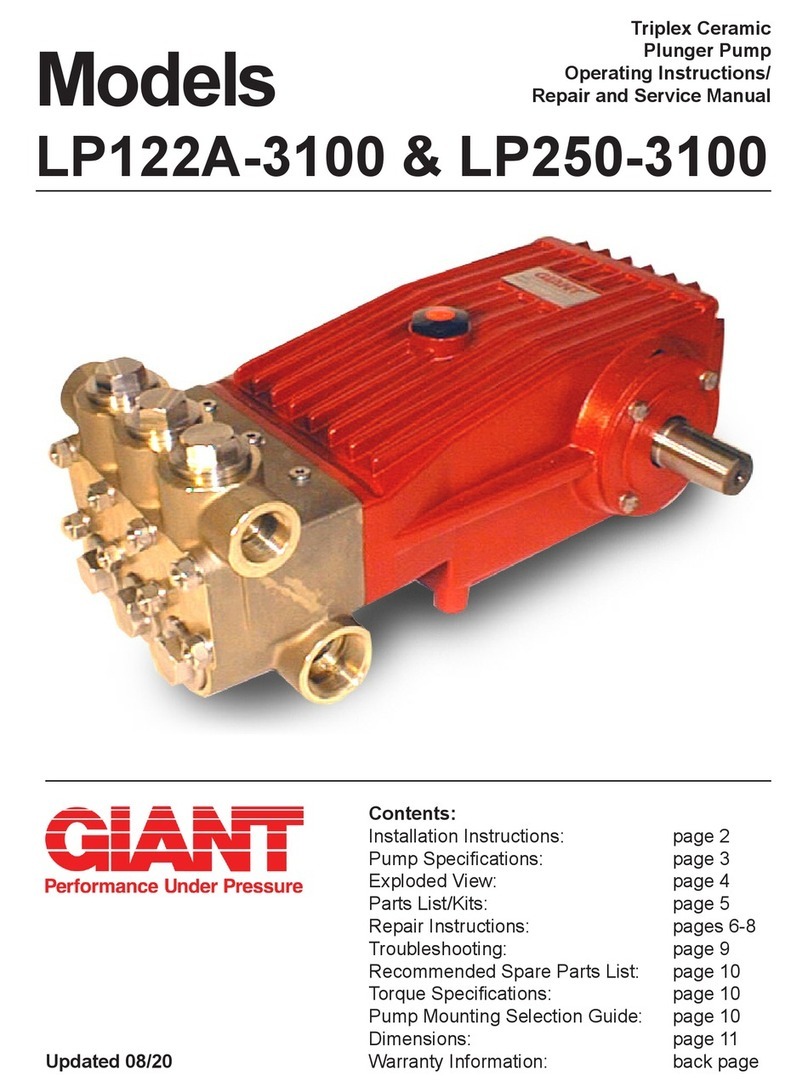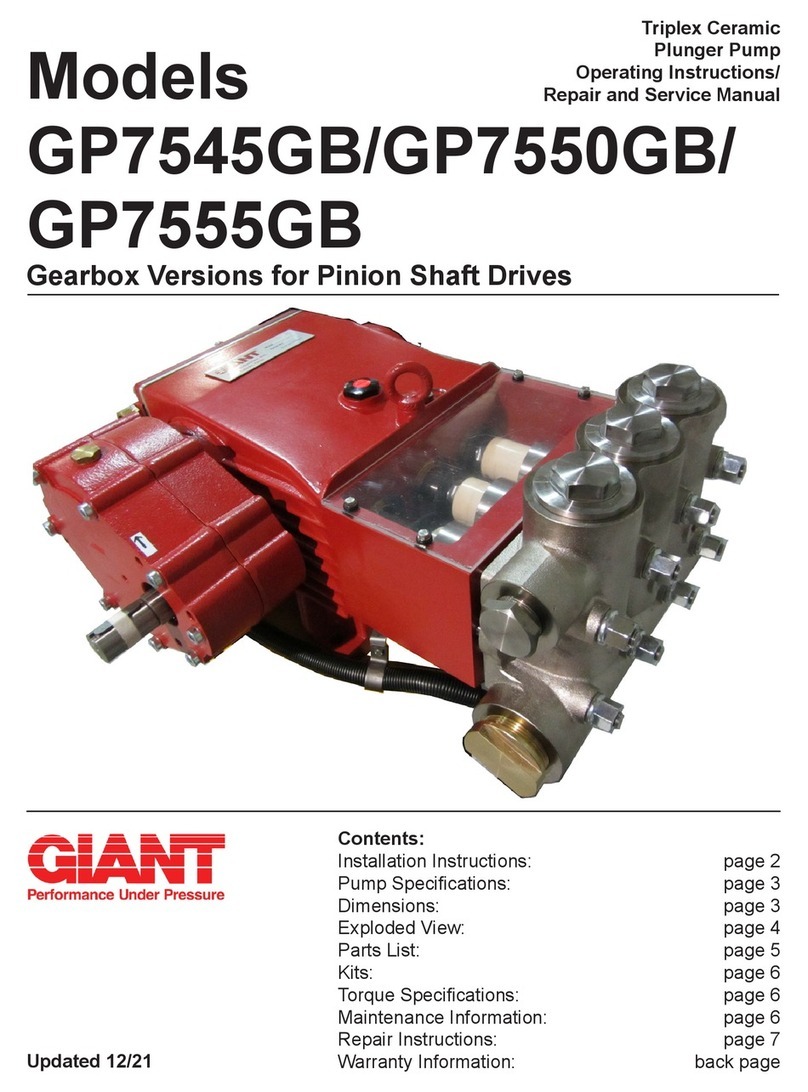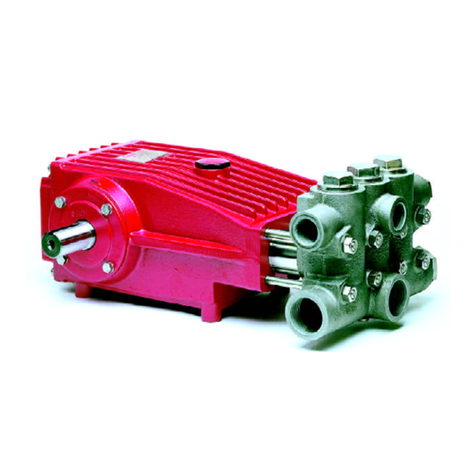
6
1. To Check Valves
Screw out plugs (32) with a socket wrench.
Remove the exposed spring tension cap (46E)
from the valve seat by pushing it sideways using
a screwdriver. Remove spring tension cap, valve
spring (46D) and valve plate (46C). Pull out valve
seat (46A) with a valve puller. Examine valve
components for wear and damage. Check O-
rings (46B). Replace worn parts.
Pay attention to the sequence of installation when
reassembling. New O-rings should be coated with
oil.
Tighten plungs (32) to 107 ft.-lbs. (145 Nm).
2. To Check Seals and Plunger Pipes
Remove hexagon socket screws (34) and pull o
valve casing (26) to the front. Pull seal retain-
ers (20) out of the valve casing (26) or crankcase
(1). Examine O-rings (21), grooved rings (23) and
scraper (23A).
Remove drip return rings (25), V-sleeves (22) and
support rings (24) from the valve casing. Check
that the bores in the leakage rings and the cor-
responding bores in the valve casing are free of
obstruction.
Check plunger surfaces (16A). Damaged sur-
faces cause accelerated seal wear. Lime and
other deposits on the plunger must be carefully
removed using a sharp knife. Be careful not to
damage plunger surfaces. If plunger pipe (16A)
is worn, remove tensioning screw (16B) with the
plunger. Examine and clean the plunger mounting
surface (17), check and mount the new plunger
pipe.
Lightly coat the threads of the tensioning screw
(16B) with Loctite and carefully tighten to 248
in.-lbs. (28 Nm). Glue must never come between
plunger pipe (16A) and centering sleeve (16F).
The plunger pipe should not be strained by ex-
tensive tightening of the tension screw or through
damage to the front surface as this can lead to
breakage.
When reassembling, insert scraper (23A) and
grooved ring (23) into seal retainer (20).
Carefully push the whole unit onto the ceramic
plunger (if necessary use the drip return ring to
hold the grooved ring in its seal retainer) and push
it down into the crankcase tting. Slide on drip re-
turn ring (25) with its V-prole facing upwards. Put
sleeve support ring (24) into the valve casing. Tilt
V-sleeve (22) into its tting. Then carefully press it
level using the at side of a screwdriver.
Be careful not to scratch the
valve casing.
Carefully push the whole pump head over the
ceramic plungers and against the crankcase.
Tighten hexagon socket screws (34) evenly in a
crosswise manner at 59 ft.-lbs. (80 Nm).
3. Drive
If oil leaks where the plunger (17) protrudes out of
the drive, gear seals (19) and plungers must be
examined and replaced as necessary.
Remove oil plug (5) and drain oil; remove crank-
case cover (3).
Remove valve casing (26), seal casing (21), seal
adaptors (20) as well as plunger pipes (16A) as
desribed in point 2.
Take off screws on connnecting rods (15), seper-
ate the back connecting rod half from the crank-
shaft and front connecting rod half by screwing a
screw into the center back bore on the connecting
rod.
Be careful not to mix up the connecting rod
halves.
Push conrod shaft as far as possible into the
crosshead guide.
Take off screws (10) and remove bearing covers
(7) with the help of a screwdriver.
Take out crankshaft carefully threading it through
the conrods (15), making sure not to bend the
conrods. Remove and dismantle conrods and
plungers (17) paying attention not to damage the
plungers.
Lever out gear seal (19) using a screwdriver.
To reinstall, press the gear seal (19) into the drive
casing first. Then insert conrods with plungers.
Thread in crankshaft. Mount bearing covers (7)
together with the taper roller bearing (12) and fix
with screws (10).
Mount bearing cover (8) and adjust clearance by
fitting shims (8A/8B) under the bearing cover (8)
to ensure the crankshaft turns easily without play
being felt.
Finally, mount conrod halves together and tighten
screws (15) at 97 in.-lbs. (11 Nm). Mount crank-
case cover (3) together with O-ring (4).
When remounting the valve casing, tighten hexa-
gon socket screws at 59 ft.-lbs. (80 Nm).
REPAIR INSTRUCTIONS - P540 and P541
Important!


